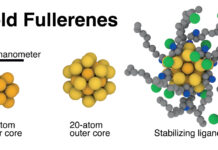 Researchers have identified a mechanism that triggers shape-memory phenomena in organic crystals used in plastic electronics. Shape-shifting structural materials are made of metal alloys, but the new generation of economical printable plastic electronics is poised to benefit from this phenomenon, too. Shape-memory materials science and plastic electronics technology, when merged, could open the door to advancements in low-power electronics, medical electronics devices, and multifunctional shape-memory materials.
Researchers have identified a mechanism that triggers shape-memory phenomena in organic crystals used in plastic electronics. Shape-shifting structural materials are made of metal alloys, but the new generation of economical printable plastic electronics is poised to benefit from this phenomenon, too. Shape-memory materials science and plastic electronics technology, when merged, could open the door to advancements in low-power electronics, medical electronics devices, and multifunctional shape-memory materials.
The findings are published in the journal Nature Communications and confirm the shape-memory phenomenon in two organic semiconductors materials.
Devices like the expandable stents that open and unblock clogged human blood vessels use shape-memory technology. Heat, light and electrical signals, or mechanic forces pass information through the devices telling them to expand, contract, bend and morph back into their original form – and can do so repeatedly, like a snake constricting to swallow its dinner. This effect works well with metals but remains elusive in synthetic organic materials because of the complexity of the molecules used to create them.
“The shape-memory phenomenon is common in nature, but we are not really sure about nature’s design rules at the molecular level,” said professor of chemical and biomolecular engineering and co-author of the study, Ying Diao. “Nature uses organic compounds that are very different from the metal alloys used in shape-memory materials on the market today,” Diao said. “In naturally occurring shape-memory materials, the molecules transform cooperatively, meaning that they all move together during shape change. Otherwise, these materials would shatter and the shape change would not be reversible and ultrafast.”
The discovery of the shape-memory mechanism in synthetic organic material was quite serendipitous, Diao said. The team accidentally created large organic crystals and was curious to find out how they would transform given heat.
Read more: Shape-shifting organic crystals use memory to improve plastic electronics
Image Credit: L. Brian Stauffer















